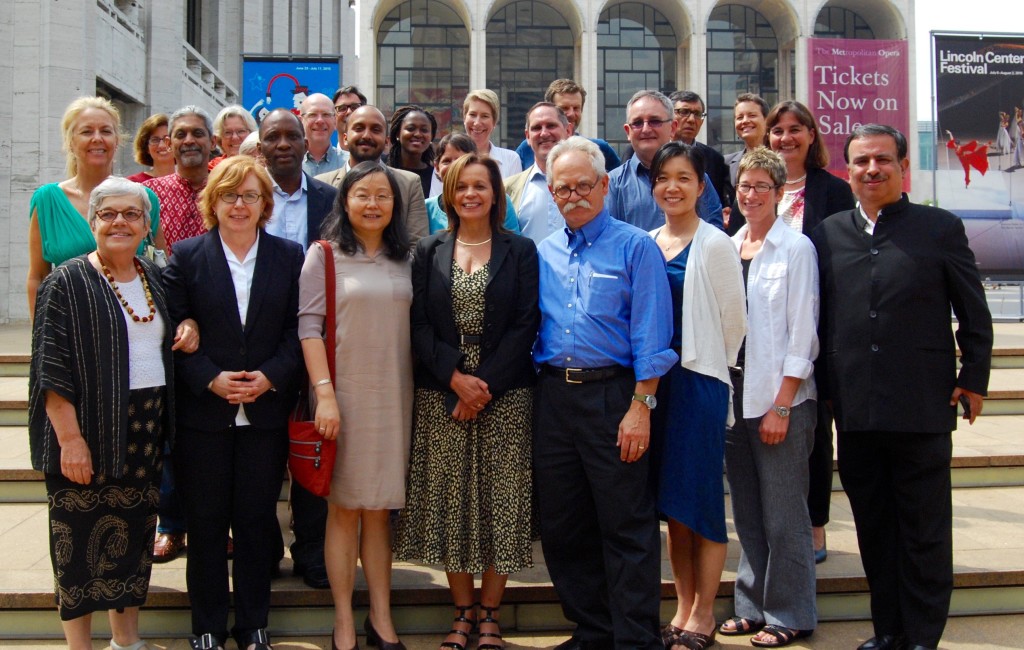Background
Relative to other ages, this is the largest generation of adolescents and young adults aged 10 to 24 years that the world will ever have. In some low and middle-income countries more than one in three of the total population is a ‘young person’. The rapid improvements in child health and survival in many countries have not been matched by improvements in the health of adolescents and young adults.
This demographic transition is being paralleled by an equally fast epidemiological transition. At the same time as the burden of infectious disease is declining, non-communicable diseases including injuries, mental health, cardiovascular and cerebrovascular disease, diabetes and obesity are increasing dramatically. These conditions commonly have their origins in childhood and adolescence.
These issues were summarised in the 2012 Lancet Series on Adolescent Health. The series also highlighted key limitations in the current global public health response. First, policy makers have yet to respond to the growing case for investment in adolescent health as a foundation for future global health. Second, there is a need for investment in better health information around young people to both ensure their health needs are visible and to monitor investments that we may make in their health. Third, many effective interventions require action outside the health service sector. In particular we need integrated intersectoral initiatives across education, employment, legislation, taxation and health service delivery for effective responses to the major health problems of young people.
A Lancet Commission on adolescent health and wellbeing
The Lancet Commission group first met in London in 2009 to plan the Commission’s work. Auspiced by The Lancet the Commission was established under the leadership of adolescent health specialists at The University of Melbourne (Professors George Patton and Susan Sawyer), The London School of Hygiene and Tropical Medicine (Dr David Ross), University College London (Professor Russell Viner) and Columbia University (Professor John Santelli).
The Commission had 30 members from 14 countries spanning Africa, Asia, Australasia, Europe, the Middle East and North and South America. It brought together disciplines from across public health, economics, political and social science, behavioural science and neuroscience to consider strategies to advance adolescent health. The Commission included members both at the science/policy interface and young people themselves.
Aim
The work of the Commission was organised around six themes:
- Adolescence within the life course
- Promoting health equity and justice for young people
- Increasing global visibility, monitoring and accountability related to young people
- Strengthening protective environments for young people
- Scaling up sustainable and effective actions among young people
- Engaging and empowering young people
Five main projects were established to take these themes forward. The overall aim of the individual project work was the production of a coherent narrative for the adolescent global field, which was published in 2016, Our future: a Lancet Commission on adolescent health and wellbeing.
- Research Project 1: Engineering the supportive and empowering systems for adolescent health and wellbeing
- Research Project 2: Economic and legal perspectives on adolescent health
- Research Project 3: Engaging and empowering young people
- Research Project 4: Scaling up sustainable and effective actions for health
- Research Project 5: Visibility, monitoring and accountability
The 2016 report of the Lancet Commission on Adolescent Health and Wellbeing was published shortly after the launch of the Global Strategy for Women’s, Children’s and Adolescents’ Health, and became a focal point for global discussions around adolescent health evidence and gaps. It presented a comprehensive and integrated perspective on adolescent health needs, together with a synthesis of existing evidence on effective responses.
